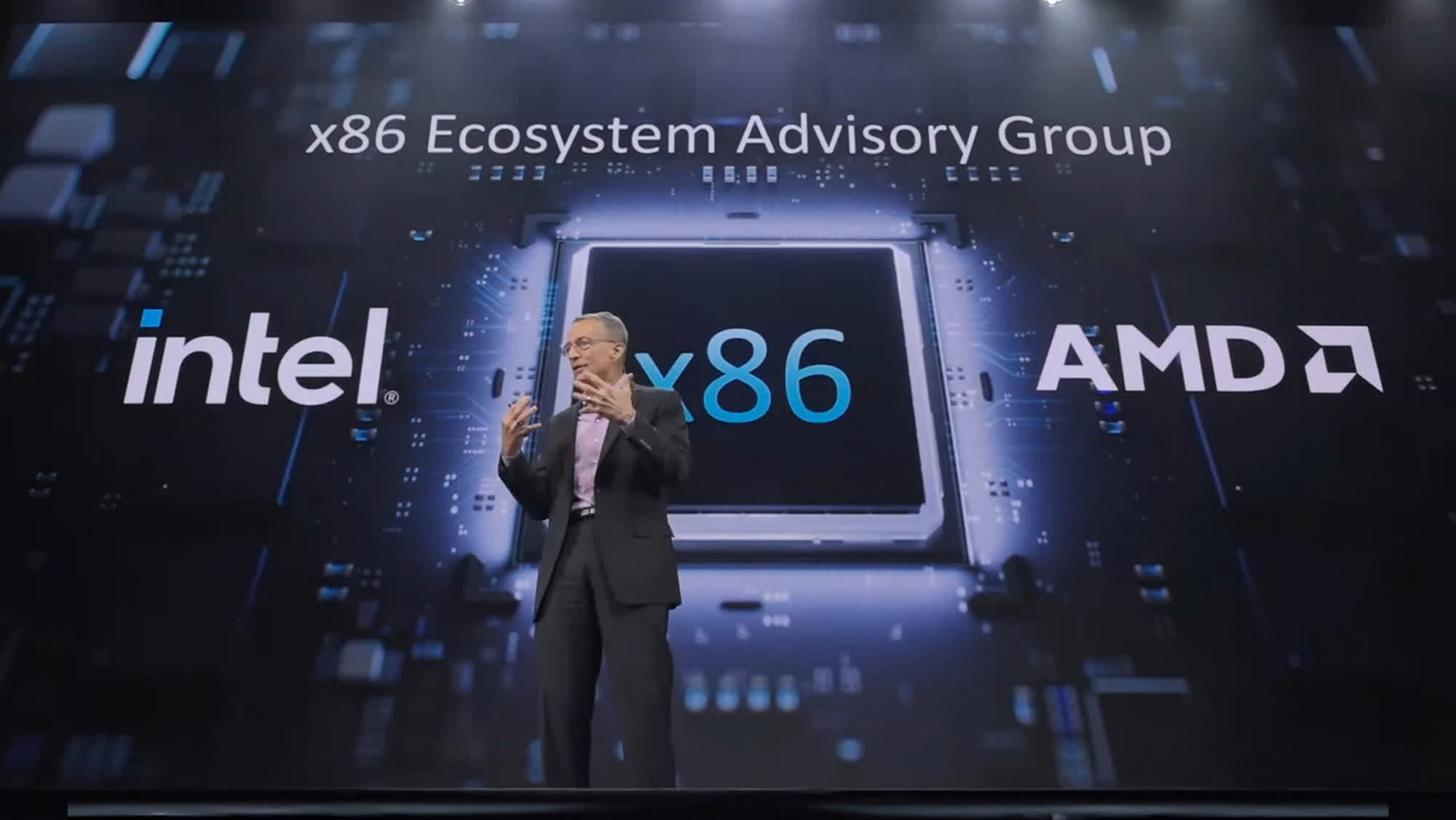Serving tech enthusiasts for over 25 years.
TechSpot means tech analysis and advice you can trust.
Editor's take: Intel is navigating a pivotal moment in its decades-long history. The company that invented the CPU is currently without a CEO, laying off thousands of workers, and losing ground to AMD in both sales and technological performance. At the very least, Chipzilla appears willing to reverse some controversial decisions made in recent years, such as its unilateral attempt to simplify the x86 processor with the new x86S standard.
A year after unveiling its initiative to introduce a fundamental technology shift to the x86 ecosystem, Intel has confirmed that the x86S ISA is officially being discontinued. While the company is now focusing on other priorities, it remains "deeply" committed to the x86 architecture, as demonstrated by its willingness to collaborate with historical competitors like AMD.
Intel announced the change in a statement shared with Tom's Hardware. By pivoting away from the x86S initiative, the company ensures that future PC CPUs will maintain full (theoretical) compatibility with 16-bit and 32-bit applications from the DOS and Windows 9x eras. Additionally, Intel plans to work with partners in the newly established x86 Ecosystem Advisory Group to solidify x86 technology as a universal CPU architecture.
Initially introduced in 2023, x86S ISA was proposed as an exclusively 64-bit architecture. The initiative aimed to eliminate native support for 16-bit and 32-bit x86 code and operating systems, while still allowing 32-bit (Win32) applications to run on modern 64-bit operating systems. The x86S ISA also sought to remove legacy features like 16-bit real mode, VT-x unrestricted mode, segmentation gates, and other outdated components.

Intel released the latest x86S specifications (version 1.2) in September, followed by the formation of the x86 Ecosystem Advisory Group in October. While the 64-bit-only x86S ISA was an Intel-driven initiative, AMD and other industry partners in the advisory group likely had strong opinions about the proposal for a "simplified" CISC instruction set architecture based on the de facto standard for PC computing since the 1970s.
At 46 years old, x86 technology remains a cornerstone of the computing world, but it faces mounting competition from newer architectures. Arm-based processors like Qualcomm's Snapdragon X Elite are pushing boundaries in the traditional PC market, presenting a real challenge to the dominance of x86.
By collaborating with AMD, Microsoft, Google, HPE, and other key players in the x86 ecosystem, Intel is positioning itself to avoid repeating past missteps – such as the infamously criticized Itanium architecture.

/cdn.vox-cdn.com/uploads/chorus_asset/file/25787622/tcl_ai_the_audition.png)
/cdn.vox-cdn.com/uploads/chorus_asset/file/25799522/LG_B4_Series_OLED_TV_Lifestyle_Press_Image.jpg)






 English (US) ·
English (US) ·